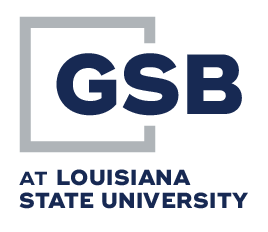Graduate School of Banking at LSU Announces 2021 Bank Management Simulation Winners
The senior class of the Graduate School of Banking at Louisiana State University annually participates in the program’s Bank Management Simulation course. This computer-based curriculum is specifically designed to recreate decision making and management scenarios in certain banking areas like funds management, investments, asset and liability management loans, and risk management. This year students were able to travel to Baton Rouge, Louisiana to participate in the 2021 session. Due to Covid restrictions on LSU’s campus, students stayed and studied at the Renaissance in Baton Rouge.
The graduating class is divided into teams for this simulation. Each team is responsible for overseeing the operation of an $800 million bank, with effective management and profitability being the key focuses. BMSim, the computer model on which this assessment is based, provides rapid feedback on future decisions that these students make for their hypothetical bank. The critical considerations when making decisions in this simulation include: competition, regulatory constraints, and the current economy.
The BMSim condenses two year’s-worth of bank operations management experience into a two-week program. The results of this program are examined by state and federal regulators on a quarterly basis. Upon course completion each team is graded on a variety of factors, such as: consistency, organization, earnings, their ability to report to shareholders, and ultimately how well their bank is positioned for future profitability and success.
The winners in each simulation are recognized, along with their home bank’s president and CEO with a letter and certificate of recognition honoring their outstanding work during the Bank Management Simulation. We are pleased to share the team winners that were announced at graduation on June 2, 2021.
| SIM | NAME | EMPLOYER | CITY | STATE |
| A1 | Samuel C. McCord | Merchants Bank of Alabama | Cullman | AL |
| A1 | Samuel Jared McCullough | First Commerce Bank | Lewisburg | TN |
| A1 | Donald E. Quintana | Hancock Whitney | New Orleans | LA |
| A1 | Steven A. Rogers | The Piedmont Bank | Peachtree Corners | FL |
| A1 | Alicia M. Rudd | Mid Florida Credit Union | Ocala | FL |
| A1 | Jon-Michael Trimm | Trustmark National Bank | Ridgeland | MS |
| A1 | Ryan M. Waddle | Peoples Bank | Mooresville | NC |
| B2 | Ramsey R. Diament | Hancock Whitney | New Orleans | LA |
| B2 | Chad S. Hancock | Bank of America | Charlotte | NC |
| B2 | Cal Thomas Hodges | BankFirst | Brookhaven | MS |
| B2 | Michael J. Leonard | Paragon Bank | Memphis | TN |
| B2 | Alan Lunsford | Kentucky Bank | Richmond | KY |
| B2 | Rochelle Dawn Mallett | JD Bank | Westlake | LA |
| B2 | Kyle Stewart Morgan | Crews Banking Corporation | Lakeland | FL |
| C5 | Jeffrey Daniel Baker | Mid Florida Credit Union | Ocala | FL |
| C5 | David A. Brown Jr. | Trustmark National Bank | Huntsville | AL |
| C5 | Charles Warner Cannada | Origin Bank | Ridgeland | MS |
| C5 | Leanne Drapeza | Hancock Whitney Bank | Gulfport | MS |
| C5 | Ryan E. Haydel | B1 Bank | Houma | LA |
| C5 | Jonathan Henry Pope | Exchange Bank | Milledgeville | GA |
| C5 | Owen C. Shirk | Fourth Capital | Nashville | TN |
| C5 | Misha Jo Wilson | Farmers National Bank | Lebanon | KY |


